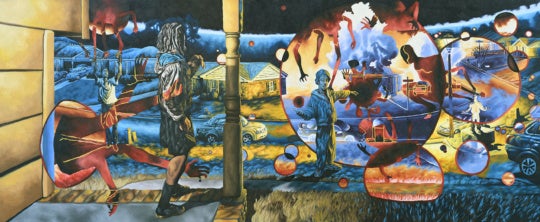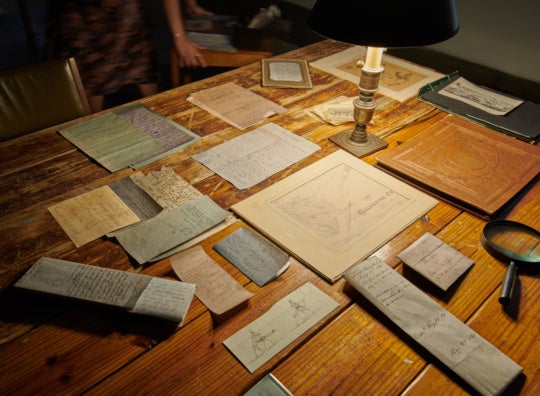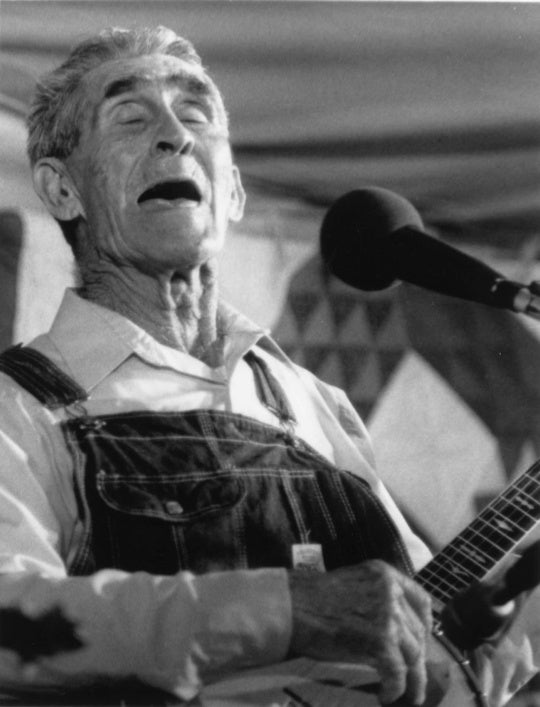
Named after the old title given to the Savannah River by the Westo Native Americans, the Westobou Festival in Augusta, Georgia, is a five-day-long smorgasbord of art, music, film, visual arts, and family activities.
When I arrived in Augusta for the festival, which took place September 28–October 2, I was greeted by signs of the city that I expected—homages to James Brown in the form of brightly colored paintings on street corners and rows of cozy local businesses punctuated by empty storefronts. My visit to the Georgia-South Carolina border city, which spanned only about 24 hours, centered around the featured visual arts exhibitions: “Unseen Patterns: Jowita Wyszomirska”; “Transformative Processes: The Sculptural Works of Matt Toole”; and “Troy Campbell: Soju, Sake, Moonshine.”

“Unseen Patterns” was born out of the city’s natural borders formed by the Savannah River and Chesapeake Bay. Polish American artist Jowita Wyszomirska translates the weight of weather into works on paper and a site-specific installation, Unseen Patterns (Feb. 28, 2015, 11:41 a.m., Chesapeake Bay – Aug. 24, 2016, 9:03 AM Georgia), occupying more than a quarter of the Westobou Gallery. Laser-cut pieces of felt and Mylar teeter on hanging strands of black thread and monofilament, floating with a delicate balance offset by the darkness and heaviness of the thread.
In each cluster of thread, the strands converge on the floor like tributaries meeting at a river, and the cutouts loom like storm clouds. A group of small black and white shapes hovers high above the rest of the installation near the gallery’s skylight, evoking the calm before the storm. The artwork descends into lower, denser, larger forms as I move toward the back of the room, a transition indicative of Wyszomirska’s subject matter, aerial maps and satellite images of weather patterns.

A walk through the installation feels like a time lapse, each cluster a snapshot of a landscape at some point in time, altogether forming a topographical portrait of the movement of the earth’s features and landmarks. Two-dimensional drawings of the floating patterns line the walls surrounding the installation, light and spacious in some areas and gloomy in others, another reminder that nature is always changing.
The 17 works on paper reinforce the installation’s suggestions of transformation and unpredictability, and they manage to do so with great visual depth. In Wisps and Currents 2, a wall of black rises like The Great Wave off Kanagawa on the left side of the artwork, but not nearly as neatly as in that iconic woodblock print. A billowy light blue force collides with wispy, curved strokes and darker, more forceful marks to form what looks like a tempest or tsunami.
The exhibition’s palette, which consists mostly of subtle grays, blues, and white, grounds these chaotic environments and gives the impression that they are neither accidental nor purposeful—it is up to the viewer to decide their causes, effects, and meaning. Wyszomirska merges the calm and the disturbing, creating works that capture the capricious character of nature.

“Troy Campbell: Soju, Sake, Moonshine” at JB Whites Building Gallery featured the Eastern-inspired work of this Augusta-based visual artist and musician. Like “Unseen Patterns,” Campbell’s exhibition deals with concepts of place and transformation, but in ways that are more readily apparent. Parts of a deconstructed grand piano combine to form Eastern and Western cultural symbols. A piano leg becomes the spire of a stupa, a structure for Buddhist meditation, in Stupa (with gum).
In Mr. Rice’s Banjo and Mandolin, other pieces of wood from the piano frame a three-paneled mixed-media work depicting the titular objects and reminiscent of an altarpiece. The piano, with its wooden form and intricately designed parts, provides versatile and manipulable materials that tie the artworks together through shared medium.
Campbell’s collages, like Kiss Alive II, combine calligraphy and bold, colorful shapes to present jarring amalgamations of opposing worlds. Some, like Mixolydian, aren’t as successful as others. The calligraphic lines, stars, and patterned strips of paper in Mixolydian lack the iconography that is successful in other works, and the collage does not reflect the strong feeling of cultural dissemination and assembly present in the exhibition. But it’s music—a diverse but shared cultural experience that is ultimately uninhibited by language, location, or beliefs—that conceptually unites the works in the exhibition. The works build upon the idea of a global community (in the title of the exhibition, alcohol is the unifying component) to construct a world where the boundaries of culture are dissolved.

In the surreal artworks on view in “Transformative Processes: The Sculptural Work of Matt Toole” at Mary S. Byrd Gallery of Art, Tool contrasts the rigidity of manmade objects with the liveliness of organic materials. Avian, a sculpture made of found objects, mahogany, oak, steel, and cast iron,is upright and branch-like with a metal beak and cast iron foot on a wooden base. Resembling a question mark in form, the sculpture could be the long neck of a crane, the expressive body of a dancer mid-movement, or something that lives only in the imagination. Other sculptures, like Spiral: A Brief Moment in the Continuum, are presented in bell jars like those one might see in a science museum. The works, which merge dissimilar materials like copper and thermoplastic, suggest isolated moments in their evolution from natural to unnatural, highlighting the ingenuity and symbiosis of humans and nature.
The artworks in the show are more than a seamless merging of the inanimate and animate. They capture the motion and malleability of both states, defying how one might expect them to behave or function in reality. The lines and textures of the work are precarious yet deliberate—they may be unexpected, but they feel like they have evolved that way.

It’s not surprising that all three exhibitions involve transformation in this mercurial period of political and social relations, but all artists present distinct worlds that explore convergences, whether they be of cultures, materials, or natural elements. Where things meet, they can also divide. Perhaps next year’s Westobou Festival will tackle what happens when they do.
“Unseen Patterns: Jowita Wyszomirska,” curated by Laney Contemporary, is on view at Westobou Gallery through November 18.
“Transformative Processes: The Sculptural Works of Matt Toole” is on view at Mary S. Byrd Gallery of Art through November 4.
Yves Jeffcoat is an Atlanta-based writer and was a participant in the inaugural cycle of BURNAWAY’s Emerging Art Writers Mentorship Program.




